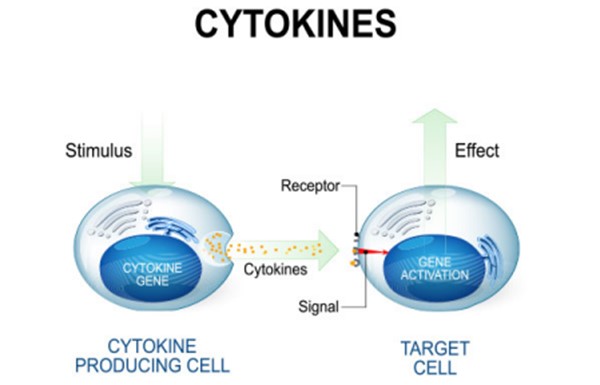Which of the following chemicals is released by one type of immune cell to directly activate another type of immune cell?
Cytokines
Lysozymes
Perforin
Granzymes.
The Correct Answer is A
Cytokines are chemicals released by one type of immune cell to directly activate another type of immune cell.
They are small proteins that act as messengers between cells and play a key role in regulating the immune response.

Choice B. Lysozymes is not the correct answer because lysozymes are enzymes that break down bacterial cell walls and do not directly activate other immune cells.
Choice C. Perforin is not the correct answer because perforin is a protein that forms pores in the membranes of target cells and does not directly activate other immune cells.
Choice D. Granzymes is not the correct answer because granzymes are enzymes that enter target cells and trigger apoptosis (cell death) and do not directly activate other immune cells.
Nursing Test Bank
Naxlex Comprehensive Predictor Exams
Related Questions
Correct Answer is A
Explanation
A catalyst is a substance that increases the rate of a chemical reaction without being consumed by the reaction.
As a result, the reaction is completed in a shorter amount of time.
Choice B is not correct because using a catalyst does not necessarily result in the formation of a more desirable product.
Choice C is not correct because using a catalyst does not necessarily result in the release of a greater amount of heat energy by the reaction.
Choice D is not correct because using a catalyst does not necessarily increase the yield of product.
Correct Answer is D
Explanation
The cytoskeleton of a cell is comprised of protein fibres that provide structural support and help maintain the shape of the cell.
These protein fibres include microfilaments, intermediate filaments, and microtubules.
Choice A. Carbohydrates is not the correct answer because carbohydrates are a type of macromolecule that provides energy to cells and are not a component of the cytoskeleton.
Choice B. Nucleic acids is not the correct answer because nucleic acids are macromolecules that store and transmit genetic information and are not a component of the cytoskeleton.
Choice C. Lipids is not the correct answer because lipids are a type of macromolecule that makes up cell membranes and are not a component of the cytoskeleton.
Whether you are a student looking to ace your exams or a practicing nurse seeking to enhance your expertise , our nursing education contents will empower you with the confidence and competence to make a difference in the lives of patients and become a respected leader in the healthcare field.
Visit Naxlex, invest in your future and unlock endless possibilities with our unparalleled nursing education contents today
Report Wrong Answer on the Current Question
Do you disagree with the answer? If yes, what is your expected answer? Explain.
Kindly be descriptive with the issue you are facing.
